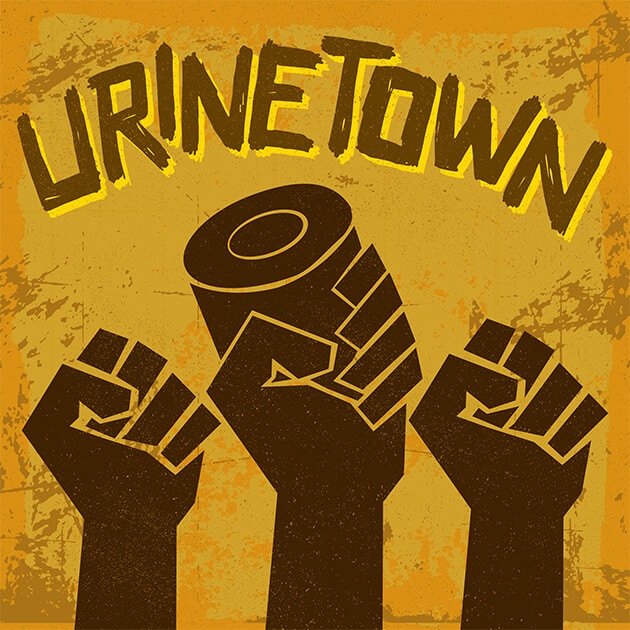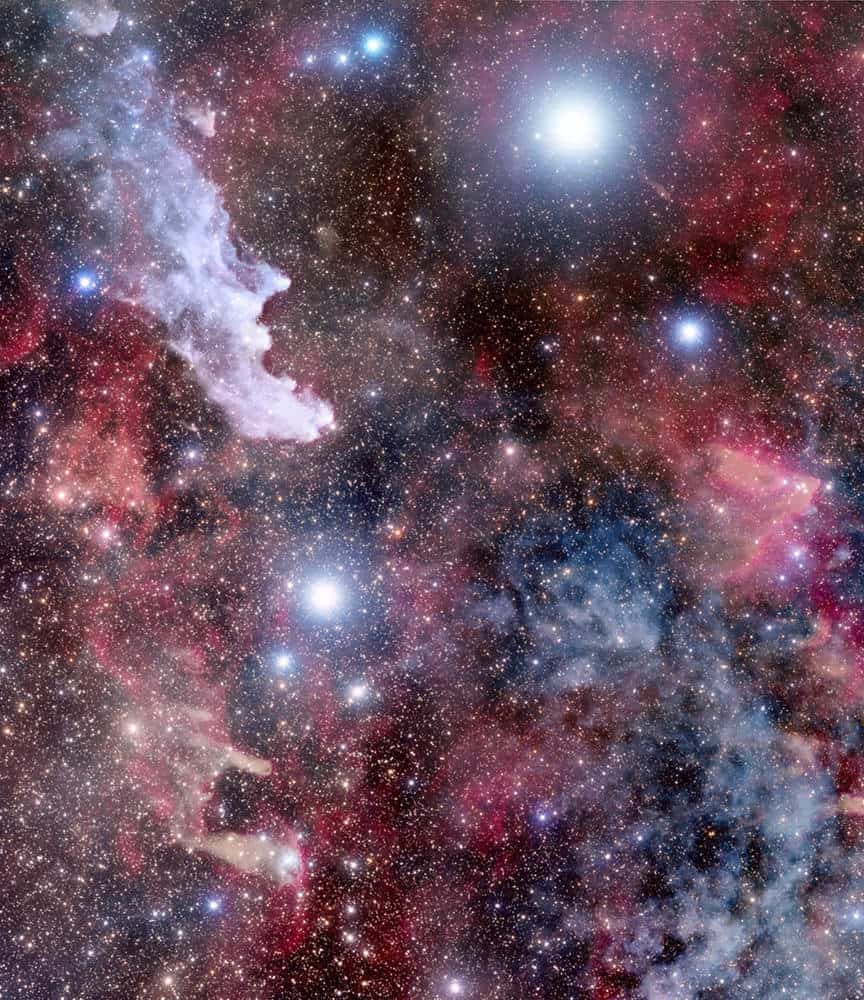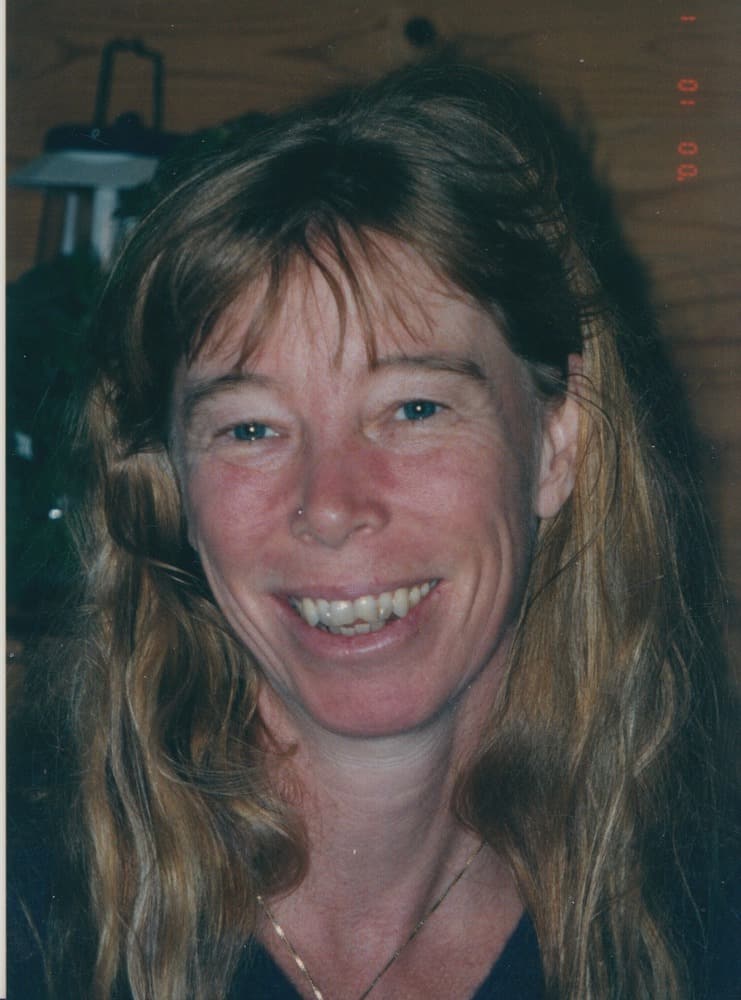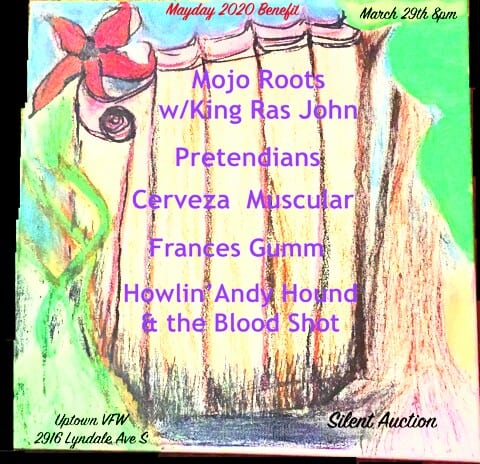Blog
Hugh Lawson (March 12, 1935 – March 11, 1997), was an American jazz pianist from Detroit who worked with Yusef Lateef for more than 10 years.
Inspired by Bud Powell, Hampton Hawes and Bill Evans, Lawson first gained recognition for his work with Yusef Lateef from 1957 onwards. He recorded with Harry “Sweets” Edison (1962), Roy Brooks, and Lateef again on several occasions in the 1960s. In 1972, he performed with “The Piano Choir” (Strata-East), a group with seven pianists including Stanley Cowell and Harold Mabern. He went on to tour with Charles Mingus in 1975 and 1977 and made recordings with Charlie Rouse (1977), George Adams, and as a leader.
Lawson died of colon cancer in White Plains, NY, March 11, 1997, at the age of 61.
https://www.youtube.com/watch?v=8gZflU8QSEE
more...Don Drummond (12 March 1932 – 6 May 1969) was a Jamaican ska trombonist and composer. He was one of the original members of The Skatalites, and composed many of their tunes.
Drummond was born at the Jubilee Hospital in Kingston, Jamaica, to Doris Monroe and Uriah Drummond. He was educated at Kingston’s Alpha Boys School, where he later taught his younger schoolmate Rico Rodriguez to play the trombone.
His musical career began in 1950 with the Eric Dean’s All-Stars where he performed jazz. He continued into the 1960s with others, including Kenny Williams.
After performing jazz for a decade, Drummond began performing ska and in 1964 Don joined The Skatalites. With Drummond’s politicized conversion to the Rastafari movement, other band members followed his lead. He became a household name in Jamaica, before suffering mental problems. He was rated by pianist George Shearing to be among the world’s top five trombone players.
In 1965 Drummond was convicted of the murder of his longtime girlfriend, Anita “Marguerita” Mahfood, an exotic rhumba dancer and singer, on 1 January 1965. He was ruled criminally insane and imprisoned at Bellevue Asylum, Kingston, where he remained until his death four years later. The official cause of death was “natural causes”, possibly heart failure caused by malnutrition or improper medication, but other theories were put forward; some of his colleagues believed it was a government plot against the Kingston musical scene, and some believed that he was killed by gangsters as revenge for the murder of Mahfood. Heather Augustyn, author of a biography of Drummond published in 2013 claimed to have proved that Drummond’s death was caused by his medications.
In 2013, a ballet telling the story of Drummond’s life was performed by the National Dance Theatre Company. Created by Clive Thompson, the ballet is titled Malungu, which was Mahfood’s pet name for Drummond.
In 2013 a comprehensive biography of Don Drummond was published by McFarland Publishing. Don Drummond: The Genius and Tragedy of the World’s Greatest Trombonist by Heather Augustyn features a foreword by Delfeayo Marsalis.
more...Urinetown 1pm Matinee Wednesday March 11th 2020 by Theater 55 at Illusion Theater located at Hennepin Center for the Arts Building downtown Minneapolis. URINETOWN, is in fact, a satire of almost every musical you can think of. More than this it parodies the traditions of musicals as a whole in terms of style, structure and story. It also jabs at the legal system, capitalism, corrupt corporation, waste in terms of the environment and our sense of entitlement. Music by Neal McIntosh, Jamie Carter, Chad Green, Paul Fontara, Matty Harris and mick laBriola.

IC 2118 (also known as Witch Head Nebula due to its shape) is an extremely faint reflection nebula believed to be an ancient supernova remnant or gas cloud illuminated by nearby supergiant star Rigel in the constellation of Orion. It lies in the Eridanus constellation, about 900 light-years from Earth. The nature of the dust particles, reflecting blue light better than red, is a factor in giving the Witch Head its blue color. Radio observations show substantial carbon monoxide emission throughout parts of IC 2118, an indicator of the presence of molecular clouds and star formation in the nebula. In fact candidates for pre-main sequence stars and some classic T-Tauri stars have been found deep within the nebula.
The molecular clouds of IC 2118 are probably juxtaposed to the outer boundaries of the vast Orion-Eridanus bubble, a giant supershell of molecular hydrogen blown by the high mass stars of the Orion OB1 association. As the supershell expands into the interstellar medium, favorable circumstances for star formation occur. IC 2118 is located in one such area. The wind blown appearance and cometary shape of the bright reflection nebula is highly suggestive of a strong association with the high mass luminous stars of Orion OB1. The fact that the heads of the cometary clouds of IC2118 point northeast towards the association is strong support of that relationship.

Harvey Mandel (born March 11, 1945, in Detroit, Michigan, United States) is an American guitarist known for his innovative approach to electric guitar playing. A professional at twenty, he played with Charlie Musselwhite, Canned Heat, the Rolling Stones, and John Mayall as well as starting a solo career. Mandel is one of the first rock guitarists to use two-handed fretboard tapping. Mandel was born in Detroit, Michigan, and grew up in Morton Grove, Illinois, a suburb of Chicago.
His first record was the album Stand Back! Here Comes Charley Musselwhite’s Southside Band in 1966 with Charlie Musselwhite. Described in Legends of Rock Guitar (1997) as a “legendary” album, it was influential in bridging the gap between blues and rock and roll, with Mandel’s “relentless fuzztone, feedback-edged solos, and unusual syncopated phrasing.” He relocated to the San Francisco Bay area, performing often at The Matrix, a club where local favorites like Jerry Garcia or Elvin Bishop would sit in and jam. He then met the pioneering San Francisco disc jockey and producer Abe “Voco” Kesh (Abe Keshishian), who signed Mandel to Philips Records and produced his first solo album, Cristo Redentor, in 1968. Mandel recorded with Barry Goldberg on a bootleg from Cherry Records and recorded with Graham Bond. He cut two more solo LPs for Philips, Righteous(1969) and Games Guitars Play (1970), followed by four more solo albums for the independent record label Janus in the early 1970s, which included Baby Batter.
more...Robert Keith McFerrin Jr. (born March 11, 1950) is an American jazz vocalist. He is known for his vocal techniques, such as singing fluidly but with quick and considerable jumps in pitch—for example, sustaining a melody while also rapidly alternating with arpeggios and harmonies—as well as scat singing, polyphonic overtone singing, and improvisational vocal percussion. He is widely known for performing and recording regularly as an unaccompanied solo vocal artist. He has frequently collaborated with other artists from both the jazz and classical scenes.
McFerrin’s song “Don’t Worry, Be Happy” was a No. 1 U.S. pop hit in 1988 and won Song of the Year and Record of the Year honors at the 1989 Grammy Awards. McFerrin has also worked in collaboration with instrumentalists, including pianists Chick Corea, Herbie Hancock, and Joe Zawinul, drummer Tony Williams, and cellist Yo-Yo Ma.
McFerrin was born in Manhattan, New York City, the son of operatic baritone Robert McFerrin and singer Sara Copper. He attended Cathedral High School in Los Angeles , Cerritos College, University of Illinois at Springfield (then known as Sangamon State University) and the California State University, Sacramento.
more...Astor Pantaleón Piazzolla (Spanish pronunciation: [pjaˈsola], Italian pronunciation: [pjatˈtsɔlla]; March 11, 1921 – July 4, 1992) was an Argentine tangocomposer, bandoneon player, and arranger. His oeuvre revolutionized the traditional tango into a new style termed nuevo tango, incorporating elements from jazz and classical music. A virtuoso bandoneonist, he regularly performed his own compositions with a variety of ensembles.
In 1992, American music critic Stephen Holden described Piazzolla as “the world’s foremost composer of tango music”.Piazzolla was born in Mar del Plata, Argentina, in 1921, the only child of Italian immigrant parents, Vicente “Nonino” Piazzolla and Assunta Manetti.His paternal grandfather, a sailor and fisherman named Pantaleo (later Pantaleón) Piazzolla, had immigrated to Mar del Plata from Trani, a seaport in the southeastern Italian region of Apulia, at the end of the 19th century. His mother was the daughter of two Italian immigrants from Lucca in Tuscany.
https://www.youtube.com/watch?v=IaP0P8YDIsQ
more...Alex or Aleck Miller (né Ford, possibly March 11 1908– May 24, 1965), known later in his career as Sonny Boy Williamson, was an American blues harmonica player, singer and songwriter. He was an early and influential blues harp stylist who recorded successfully in the 1950s and 1960s. Miller used various names, including Rice Miller and Little Boy Blue, before calling himself Sonny Boy Williamson, which was also the name of a popular Chicago blues singer and harmonica player. To distinguish the two, Miller has been referred to as Sonny Boy Williamson II.
He first recorded with Elmore James on “Dust My Broom“. Some of his popular songs include “Don’t Start Me Talkin’“, “Help Me“, “Checkin’ Up on My Baby“, and “Bring It On Home“. He toured Europe with the American Folk Blues Festival and recorded with English rock musicians, including the Yardbirds, the Animals, and Jimmy Page. “Help Me” became a blues standard, and many blues and rock artists have recorded his songs.
more...I didn’t know Kitty well but knew her for many years and she was a driven woman of extraordinary determination, compassion and love. She was a bird puppet for my son Diegos Memorial CD release event, dancing so wonderfully. The BEAU KOO JACKS will perform for a dance party concluding Kittys Memorial Event on March 22nd at the Walker Church 7-830pm.
Have a Great new adventure Kitty I know you will!
April 18, 1952 – February 23, 2020
Kitty, as most knew her, passed away after a rare, aggressive form of cancer that she became aware of in January 2019. She grew up in Rochester, Minnesota and graduated from Mayo High School in 1970. She studied English Literature at University of Minnesota. She taught children in Navajo Country in northeast Arizona and court referred boys in an alternative wilderness setting throughout the 1970’s.
In 1981 Kitty had an at home birth to her only daughter Hanna in rural Aitkin County. Her work life included many creative endeavors; performing with Heart of the Beast Puppet Theater in Minneapolis; volunteering at Community radio in Grand Rapids and Minneapolis. After studying and becoming an accomplished Yoga teacher in Community Education, at U of M, at retreat centers and at home, she took voice lessons and sang. She cherished collecting and reading books.
Katherine (Kitty) is preceded in death by her father, Vern Kuluvar; her mother, Mary (Buckingham) Kuluvar; brother, Kevin. She is survived by brothers, Scott and Dan; daughter, Hanna; grandsons, Willie and Obie; as well as hundreds of friends and adopted family.
There will be a celebration of her life on Sunday, March 22nd at Walker Church in Minneapolis, Minnesota, 3104 16th Av. South, 55407. Service 4-6 pm, Dinner 6-7 pm, Songs, Stories & Dance 7-9 pm. Donations can be made in Kitty’s name to Cedar Cultural Center in Minneapolis.

Constellation of the unicorn (Monoceros). Pictured as a star forming region and cataloged as NGC 2264, the complex jumble of cosmic gas and dust is about 2,700 light-years distant and mixes reddish emission nebulae excited by energetic light from newborn stars with dark interstellar dust clouds. Where the otherwise obscuring dust clouds lie close to the hot, young stars they also reflect starlight, forming blue reflection nebulae. The featured wide-field image spans over three times the diameter of a full moon, covering over 100 light-years at the distance of NGC 2264. Its cast of cosmic characters includes the Fox Fur Nebula, whose convoluted pelt lies just to the lower right of the image center, bright variable star S Mon visible just above the Fox Fur, and the Cone Nebula just to the left. Given their distribution, the stars of NGC 2264 are also known as the Christmas Tree star cluster.

Ronnie Earl (born Ronald Horvath, March 10, 1953, Queens, New York, United States) is an American blues guitarist and music instructor.
Earl collected blues, jazz, rock and soul records while growing up. He studied American History at C.W. Post College on Long Island for a year and a half, then moved to Boston to pursue a Bachelor’s Degree in Special Education and Education at Boston University where he would graduate in 1975. He spent a short time teaching handicapped children. During his college years, he attended a Muddy Waters concert at the Jazz Workshop in Boston. After seeing Waters perform, Earl took a serious interest in the guitar, which he had first picked up in 1973. His first job was as a rhythm guitarist at The Speakeasy, a blues club in Cambridge, Massachusetts. In addition to playing in the Boston blues scene, Earl traveled twice by Greyhound Bus to Chicago, where he was introduced to the Chicago blues scene by Koko Taylor.
Later he traveled to New Orleans and Austin, Texas, where he spent time with Kim Wilson, Jimmie Vaughan and The Fabulous Thunderbirds. In 1979 he joined the band Roomful of Blues as lead guitarist.
more...John Donald “Don” Abney (March 10, 1923 – January 20, 2000) was an American jazz pianist.
Abney was born in Baltimore, Maryland. He studied piano and french horn at the Manhattan School of Music, and he played the latter in an Army band during military service.
After returning from the army he played in ensembles with Wilbur de Paris, Bill Harris, Kai Winding, Chuck Wayne, Sy Oliver, and Louis Bellson. He had a sustained career as a session musician, playing on recordings for Louis Armstrong, Benny Carter, Oscar Pettiford, Ella Fitzgerald, Carmen McRae, Sarah Vaughan, Eartha Kitt, and Pearl Bailey. He also played on a large number of recordings for more minor musicians and on R&B, pop, rock, and doo wop releases.
After moving to Hollywood, he worked as musical director for Universal Studios/MCA. He appeared as a pianist in the film Pete Kelly’s Blues behind Ella Fitzgerald. Additional credits include recording and arrangements for the film Lady Sings the Blues. He toured with Anita O’Day in the 1980s. Early in the 1990s he moved to Japan and toured there with considerable success, playing weekly at the Sanno Hotel in Tokyo. Upon his return to the United States in 2000, he died of complications from kidney dialysis, in Los Angeles, California. He was interred at Forest Lawn Cemetery, in Burbank, CA. He is survived by 5 children.
more...Norman Blake (born March 10, 1938) is a traditional American stringed instrument artist and songwriter.
Blake was born in Chattanooga, Tennessee, and grew up in Sulphur Springs, Alabama. He listened to old-time and country music on the radio by the Carter Family, the Skillet Lickers, Roy Acuff, and the Monroe Brothers (Charlie and Bill Monroe). He learned guitar at age 11 or 12, then mandolin, dobro, and fiddle in his teens. When he was 16, he dropped out of school to play music professionally.
In the 1950s, Blake joined the Dixieland Drifters and performed on radio broadcasts, then joined the Lonesome Travelers. When he was drafted in 1961, he served as an Army radio operator in the Panama Canal Zone. He started a popular band known as the Kobbe Mountaineers. A year later, while he was on leave, he recorded the album Twelve Shades of Bluegrass with the Lonesome Travelers.
more...Leon Bismark “Bix” Beiderbecke (March 10, 1903 – August 6, 1931) Davenport, Iowa was an American jazz cornetist, pianist, and composer.
Beiderbecke was one of the most influential jazz soloists of the 1920s, a cornet player noted for an inventive lyrical approach and purity of tone. His solos on seminal recordings such as “Singin’ the Blues” and “I’m Coming, Virginia” (both 1927) demonstrate a gift for extended improvisation that heralded the jazz ballad style, in which jazz solos are an integral part of the composition. Moreover, his use of extended chords and an ability to improvise freely along harmonic as well as melodic lines are echoed in post-WWII developments in jazz. “In a Mist” (1927) is the best known of Beiderbecke’s published piano compositions, and the only one that he recorded. His piano style reflects both jazz and classical (mainly impressionist) influences. All five of his piano compositions were published by Robbins Music during his lifetime.
A native of Davenport, Iowa, Beiderbecke taught himself to play the cornet largely by ear, leading him to adopt a non-standard fingering technique that informed his unique style. He first recorded with Midwestern jazz ensemble The Wolverines in 1924, after which he played briefly for the Detroit-based Jean Goldkette Orchestra before joining Frankie “Tram” Trumbauer for an extended engagement at the Arcadia Ballroom in St. Louis, also under the auspices of Goldkette’s organisation. Beiderbecke and Trumbauer joined Goldkette’s main band at the Graystone Ballroom in Detroit in 1926. The band toured widely and famously played a set opposite Fletcher Henderson at the Roseland Ballroom in New York City in October 1926. He made his greatest recordings in 1927. The Goldkette band folded in September 1927 and, after briefly joining bass saxophone player Adrian Rollini‘s band in New York, Trumbauer and Beiderbecke joined America’s most popular dance band: Paul Whiteman and his Orchestra.
Beiderbecke’s most influential recordings date from his time with Goldkette and Whiteman, although he also recorded under his own name and that of Trumbauer’s. The Whiteman period marked a precipitous decline in his health due to his increasing use of alcohol. Treatment for alcoholism in rehabilitation centers, with the support of Whiteman and the Beiderbecke family, failed to stop his decline. He left the Whiteman band in 1929 and in the summer of 1931 he died in his Sunnyside, Queens, New York apartment at the age of 28.
His death, in turn, gave rise to one of the original legends of jazz. In magazine articles, musicians’ memoirs, novels, and Hollywood films,Beiderbecke has been envisaged as a Romantic hero, the “Young Man with a Horn” (a novel, later made into a movie starring Kirk Douglas, Lauren Bacall, Doris Day, and Hoagy Carmichael). His life has often been portrayed as that of a jazz musician who had to compromise his art for the sake of commercialism. Beiderbecke remains the subject of scholarly controversy regarding his full name, the cause of his death and the importance of his contributions to jazz.
He composed or played on recordings that are jazz classics and standards such as “Davenport Blues“, “In a Mist“, “Copenhagen“, “Riverboat Shuffle“, “Singin’ the Blues“, and “Georgia On My Mind“.
more...More Posts
- Antônio Carlos Jobim
- Sleepy John Estes
- World Music with Maallem Abdelkebir Merchane
- Daily Roots with Gabriel & the Angel
- Surviving the Pandemic and Realizing Racial Justice
- The Cosmos with NGC 2841
- Jools Holland
- Julius Hemphill
- Aaron Neville
- Joe Albany
- Jimmy Forrest
- World Music with Vedan Kolod
- Daily Roots with Howie Atkins
- Surviving the Pandemic and Realizing Racial Justice
- The Cosmos with Cassiopeia A
- Gary Burton
- Curtice Counce
- Django Reinhardt
- World Music with the Warsaw Village Band
- Daily Roots with Jackie Paris

